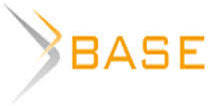Prospects for the development of electronic banking services in Russia
Abstract
That the intensification of innovative processes in the modern economy and in the
banking sector in particular, as one of the areas most sensitive to innovation, has led
to the formation of new, innovative and constantly evolving products and services,
such as electronic banking services. Electronic banking systems today are one of the
major conditions for ensuring the required level of competitiveness for banks. The
article examines the prospects for developing electronic banking services systems in
Russia, based on a study of the current situation of electronic banking services systems
in Russian banks. The focus of the article is on the essence of electronic banking
services, their classifications, and an examination of the advantages and disadvantages
of the various systems. Particular attention has been paid to discussing the
latest technologies currently available and what are the opportunities for development
opportunities.
Keywords: electronic banking services, innovative services, essence of electronic banking services, development opportunities
Introduction
In recent years, the world is witnessing great changes and developments in the information and communication market and its technologies rapidly and rapidly, and these technologies have been linked to various economic activities and fields, and the banking sector has been one of the most prominent sectors affected by the information and communication revolution, where the use of modern technology has become an inherent element of it. Its availability in terms of efficiency in work, speed of delivery, abundance of information about customers and markets, as well as for the creation of electronic service products with a high degree of technological development because banking service depends mainly on the extent of its quality and achieving the greatest possible satisfaction for its recipients and the highest level of satisfaction it has on the one hand and on the one hand. Another is the extent to which these electronic banking services contribute to improving and developing the financial performance of banks.
The development of electronic banking services systems for customers over the past few years has become one of the priority areas in the banking sector [Dujsen K., 2020]. The number of users of electronic banking services is steadily increasing. The current trend is to form fundamentally new technologies to serve banking customers by taking advantage of the latest findings of the modern technological revolution.
New technologies have changed the nature of the economic relationships between the bank and its customers. The most dynamically developing electronic banking technologies could include internet banking, and mobile banking services. The largest number of electronic banking services includes these two areas [Jusupova O. A., 2020].
Therefore, studying the current situation of electronic banking services and the trends of their development is of great importance. In the face of global competitive pressures imposed on Russian banks, it is important to develop the banking technologies used and take advantage of the latest innovations in the field of electronic banking services.
The main part
Today, in order to increase the efficiency of activities and successfully compete in the banking services market, banks are forced to use various innovations, as well as improve traditional banking products, thus contributing to the introduction and development
of modern customer service technologies [Vaganova O., Bykanova N., Grigoryan A., Cherepovskaya N., 2017]. Electronic banking services are one of the most beneficial and convenient forms of interaction for both the bank and its customer, which enables the customer to access the necessary banking products and services without visiting the bank.
The fact that our lives cannot be imagined currently without recent innovations in information communication and payment technologies explains the importance of identifying problematic aspects and considering the prospects for developing electronic banking services systems. The concept of electronic banking services has been precisely defined by Fliginskih et al [Fliginskih T., Vaganova O., Solovjeva N., Bykanova N., Ragheed Y., Usatova L., 2020]. It is the bank’s provision of various banking services to the customer via electronic means without the need to visit the bank. However, scholars have yet to come up with an unambiguous explanation for the essence of electronic banking services. Also, issues related to problematic aspects and prospects for developing electronic banking services systems have not been sufficiently studied [Berdyugin A. A., Revenkov P. V., 2019].
The purpose of the study is to define the essence of electronic banking services systems and determine the directions for their development in the current circumstances.
The electronic banking services system must be understood as a set of sales channels, software systems, devices and other banking facilities that provide rapid access for the customer to his accounts electronically, the provision of information services by the bank to the customer, and the exchange of technological information without the customer visiting the bank in accordance with the terms of the agreement concluded between the bank and the customer.
The extensive use of electronic banking services systems in most developed countries today explains the existence of a large number of positive aspects, both for the bank and for its customers. Therefore, the main advantage of the customer is his ability to conduct banking operations without spatial or temporal restrictions [3]. For the bank, the application of the electronic banking services system allows to attract more customers, reduce their service costs, and as a result, increase banking resources, and expand the volume of banking services in the real sector. For the economy and in the field of public services and to increase its competitiveness in the banking services market [Indrayani C. W., Aritra S., Muda I., 2019]. Electronic banking services can be classified according to the service delivery channel to: customer bank systems, automatic teller services, mobile banking services, internet banking services.
By looking at the advantages and disadvantages of each type of electronic banking services, it is possible to identify their common features, such as convenience, efficiency in use, saving time, and common disadvantages such as security-related risks. However, there are advantages and disadvantages that are specific to each type.
The main feature of the Client-Bank system is the availability of a Cryptographic Information Protection (CIP) system, as well as the use of an Electronic Signature (ES) mechanism. The presence of an encryption device allows you to confirm the identity of the customer with a password, and an electronic signature is required to ensure the authenticity and integrity of the document in this system [Tskhadadze N., 2019].
The peculiarities of working in the banking automatic teller system is the ability to carry out cash operations, as the ATM is the only channel through which the customer can obtain cash units. The downside is the customer's need to look for an ATM or terminal, which is not always located near the customer’s location [Nikol'skaja A., Ovcharov D., 2020].
Mobile phone theft, as well as reliance on the mobile network – all of these flaws are inherent in mobile banking services, but these services are currently the fastest growing due to their unique features of unlimited access to banking services anytime and anywhere they are available. Mobile phone network. Although online banking is the most popular version among customers, when using it, a number of difficulties arise, primarily related to the risk of unauthorized access by fraudsters to online banking accounts [Korobeynikova O. M., Korobeynikov D. A., Popova L. V., Savina O. V., Kamilova R. S., 2017].
Despite all the shortcomings of the electronic banking services systems, its widespread distribution and future popularization is inevitable. The following promising directions of its development can be distinguished:
- The increasing popularity of Internet Banking and Mobile Banking among users;
- Introducing new and updated technologies and products within the framework of the types of electronic banking system;
- Improving the security tools for electronic banking services systems.
Today, online banking services are most popular among Russian consumers. In 2020, the share of operations on online banking deposits increased by 6%; The share of issued applications for a loan increased by 5%, and the share of loans granted – by 2 and reached 15% [Svedenija ob ustrojstvah…].
Given the dynamics of receipts of credit institutions in the Russian Federation for payment orders requested by customers in electronic form in the years 2017-2019, the growth rate of the volume of payments by payment orders received in electronic form from individuals in 2019 was 22.9% compared to 2018 and 9% compared to 2017, indicating the increasing popularity of electronic banking services systems among customers. The largest share of the volume of payments was via internet banking, so that the largest growth rate was the share of mobile banking, as the growth rate in 2019 was 238% compared to 2017, and 62.9% compared to 2018 (see Table 1) [Kolichestvo schetov s distancionnym dostupom…].
By analyzing the structure of payments by payment orders for the first nine months of 2020 (Table 2), we can determine a significant dominance of the electronic method of receiving them by credit institutions among legal entities. The share of these payment orders exceeded 92%, of which the volume of payments with online payment orders was 86%, or 163 billion roubles. Credit institutions received payment orders from individuals both electronically and on paper, with a prevalence in favour of the latter method (57.8%). Additionally, one can notice an increase in the number of payments made by customers via mobile banking in 2020. Compared to previous years, which were affected by the active work of banks and mobile phone operators in carrying out a number of transactions via mobile banking.
Today, among the most popular and promising banking products offered to users through electronic banking services systems are personal finance management systems such as EasyFinance.ru, which enable users to remotely enter data into their bank and manage accounts, credit cards, consumer loans, auto loans, mortgages, and investments. And other products, keeping track of your financial situation.
It is impossible not to mention the new QBIS technology developed by Banking Information Systems (BIS). This company has introduced new software products for credit institutions to the Russian market, namely, System. online QBIS. Online and new QBIS. The FrontOffice small office publishing system, allowing banks to open a point of sale and customer service in the shortest possible time and wherever there is a mobile internet. BIS has also introduced a new system to automate working with bad debts for individuals and legal entities QBIS. Collection, which makes it possible to fully automate the activities of the collection unit in a bank or collection company.
Today, biometric technologies are actively used in various fields, and banks are no exception. The widespread use of technologies by data banks is explained by the increasing popularity of information products, as well as the improved "skill" of fraudsters. Until now, biometric systems have found their applications mainly in mobile applications. So, like banks such as Sberbank, Alfa-Bank, Tinkoff Bank and MTS Bank, for user identification, the functionality of entering the payment system using a fingerprint has been implemented for devices with biosensors. In addition, it is planned to use voice permission and face identification (photos) in mobile applications in mobile applications.
There are also well-known examples of using biometric techniques in ATMs. For example, the Chinese company Tzekwan Technology and Beijing Tsinghua University employees have developed an automated teller machine that confirms the identity of the customer by photographing them and comparing the data in the image with the data of the payment card of the customer [Xie X., Xie X., Martínez-Climent C., 2019].
In Russia, Sberbank's Ladoshki service was developed, which allows schoolchildren to pay for meals in the canteen with a palm print. At the same time, upon touching a palm sensor, money is deducted from the account, and parents receive text messages containing information about what the child ate.
A good alternative to plastic cards is wireless payments, which allow contactless data exchange between a mobile phone and a reader. Wireless technology NFC (near field communication – “near field communication”) is used effectively in the banking sector for payments. It is sufficient to carry a mobile device with NFC function near the device instead of a bank card and the transaction will be successful. The big advantage of NFC is the ability to store information on multiple bank cards, which will later allow payment cards to be taken out of circulation. This technology allows contactless payment through the virtual card via contactless payment services such as Google Pay, as it is sufficient to place a mobile phone near the electronic payment terminal to complete the payment process.
The globally promising trend is to take advantage of artificial intelligence and machine learning techniques in designing new electronic banking services applications that enable the financial behaviour of the customer and provide specific services for each client separately, such as loans or managing a financial portfolio. Artificial intelligence enables the creation of banking and interactive payment systems, as it is possible to pay directly in supermarkets as soon as the products are placed in the basket without the need to go to the cashier to pay for the purchases. Or artificial intelligence can be used in mobile banking applications, where the application gives the customer the best division of his income based on studying his previous buying behaviour.
Conclusion
Despite the extensive use of electronic banking services in Russia, it has not reached the level of efficiency in the developed countries. The development of electronic service systems in Russian banks believes that the strategy of providing these services will change. From our point of view, banks should seek to increase customer orientation, the main goal of the development department in any bank should be to increase customer satisfaction and loyalty through the new services provided. At present, electronic banking services are no longer an additional service that the customer can obtain through his dealings with the bank. Rather, it has become one of the determinants of the customer’s choice of the appropriate bank.
The use of the latest technology in banking is the solution, especially since the resistance to change for banking services has become weaker than before, and the next customer is now able to adapt to high-tech banking products and services in an easier and faster way, especially if the bank has developed a correct development strategy that contributes to increasing the efficiency of banking systems. Electronic banking services

















Reference lists
1. Berdyugin A. A., Revenkov P. V., (2019). Approaches to measuring the risk of cyberattacks in remote banking services of Russia // Безопасность информационных технологий. 26 (4): 83-92.
2. Fliginskih T., Vaganova O., Solovjeva N., Bykanova N., Ragheed Y., Usatova L., (2020). The impact of e-banking on performance of banks: Evidence from Russia // Journal of Advanced Research in Dynamical and Control Systems.. 12(4): 231-239.
3. Indrayani C. W., Aritra S., Muda I., (2019). Customer Satisfaction as Intervening Between Use Automatic Teller Machine (ATM), Internet Banking and Quality of Loyalty (Case in Indonesia) // International Journal of Financial Research. 10(6): 54-66.
4. Korobeynikova O. M., Korobeynikov D. A., Popova L. V., Savina O. V., Kamilova R. S., (2017).The current state of the payment infrastructure and development of payment systems in Russia and the Volgograd region // Revista Espacios. 38(62): 345-361.
5. Shulzhenko N., Romashkin S., (2020). Internet fraud and transnational organized crime // Juridical Tribune (Tribuna Juridica). 10(1): 162-172.
6. Tskhadadze N., 2019. Use of Remote Banking Technology. International Conference Communicative Strategies of Information Society (CSIS 2018) Atlantis Press, P. 108-111.
7. Vaganova O., Bykanova N., Grigoryan A., Cherepovskaya N., (2018). Directions of development of bank technologies applied in the Russian market of retail credit services. National Academy of Managerial Staff of Culture and Arts Herald. № 3: 382-387.
8. Xie X., Xie X., Martínez-Climent C., (2019). Identifying the factors determining the entrepreneurial ecosystem of internet cultural industries in emerging economies. International Entrepreneurship and Management Journal.
15( 2): 503-522.
9. Dujsen K., (2020). Rynok elektronnyh bankovskih uslug: Vozmozhnye riski i perspektivy razvitija. Sovremennaja ekonomika: aktual'nye voprosy, dostizhenija i innovatsii, 2020: 43-48.
10. Nikol'skaja A., Ovcharov D., (2020). Tendentsii razvitija potrebitel'skogo kreditovanija s ispol'zovaniem bankovskih kart v uslovijah sovremennogo razvitija bankovskogo sektora RF // Beneficiar, 2020, № 83: 3-7.
11. Kolichestvo schetov s distantsionnym dostupom, otkrytyh v kreditnyh organizatsijah [Elektronnyj resurs] // Ofitsial'ny sait CB RF— Rezhim dostupa: https://www.cbr.ru/Content/Document/File/105964/t9.xlsx — Zagl.s jekrana.
12. Svedenija ob ustrojstvah, raspolozhennyh na territorii Rossii i prednaznachennyh dlja osushhestvlenija operatsij s ispol'zovaniem i bez ispol'zovanija platezhnyh kart [Elektronny resurs] // Ofitsial'ny sait CB RF— Rezhim dostupa: https://www.cbr.ru/Content/Document/File/105971/t16.xlsx — Zagl.s jekrana.
13. Yusupova O. A., (2020). Didzhitalizatsija platezhej i jeffektivnost' internet-bankinga // Tsifrovaja transformatsija v ekonomike transportnogo kompleksa. Razvitie tsifrovyh ekosistem: nauka, praktika, obrazovanie, 2020: 380-384.